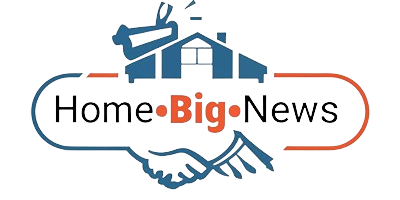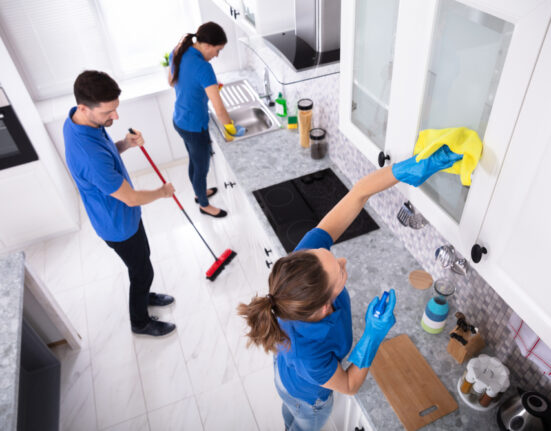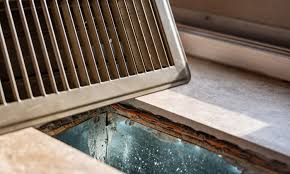Air ducts are crucial components of a home’s HVAC (heating, ventilation, and air conditioning) system. They are responsible for distributing conditioned air throughout the house, ensuring a comfortable indoor environment. However, when air ducts are not functioning correctly, they can significantly impact your home’s energy efficiency, leading to increased energy bills and decreased comfort. Recognizing the signs of inefficient air ducts is essential to maintaining optimal energy efficiency and comfort in your home.
1. Uneven Temperature Distribution
One of the most noticeable signs of air duct problems is uneven temperature distribution throughout your home. If some rooms are significantly warmer or cooler than others, it could indicate that your air ducts are not distributing air efficiently. This issue can arise from various ductwork problems:
Leaky Ducts
- Air Leaks: Air leaks in the ducts can cause conditioned air to escape before reaching its intended destination. This can lead to inconsistent temperatures in different rooms.
- Poor Sealing: Improperly sealed duct connections can allow air to escape, reducing the efficiency of your HVAC system.
Blocked Ducts
- Obstructions: Debris, dust, or even pests can obstruct the airflow in the ducts, preventing air from reaching certain areas of your home.
- Crushed Ducts: Ducts that have been crushed or bent can restrict airflow, leading to uneven temperature distribution.
2. Increased Energy Bills
If you notice a sudden increase in your energy bills without a corresponding change in usage patterns, your air ducts may be to blame. Inefficient air ducts can force your HVAC system to work harder to maintain the desired temperature, resulting in higher energy consumption. Here are some reasons why this may happen:
Duct Insulation
- Lack of Insulation: Uninsulated ducts can lose heat or coolness as air travels through them, causing your HVAC system to work harder to maintain the desired temperature.
- Damaged Insulation: Insulation that is damaged or deteriorated can also lead to energy loss.
Duct Size and Design
- Improper Sizing: Ducts that are too small or too large for your HVAC system can lead to inefficiencies and increased energy consumption.
- Poor Design: Ducts that are poorly designed or installed can create bottlenecks or excessive bends, reducing airflow and efficiency.
3. Excessive Dust and Allergens
If you notice an increase in dust, allergens, or other airborne particles in your home, it may be a sign that your air ducts are not functioning correctly. Several factors can contribute to this issue:
Dirty Ducts
- Dust Buildup: Over time, dust and debris can accumulate in your air ducts, reducing airflow and efficiency. This buildup can also be circulated throughout your home, affecting indoor air quality.
- Mold and Mildew: Moisture in the ducts can lead to mold and mildew growth, which can be circulated into your home and cause health issues.
Poor Filtration
- Ineffective Filters: Air filters that are not effective or not changed regularly can allow dust and allergens to enter your ducts and be circulated throughout your home.
4. Frequent HVAC Repairs
If your HVAC system requires frequent repairs, it could be a sign that your air ducts are causing strain on the system. When ducts are inefficient, your HVAC system must work harder to maintain the desired temperature, leading to increased wear and tear on the components. Here are some issues to look out for:
Overworking the System
- Short Cycling: If your HVAC system frequently turns on and off, it may be short cycling due to inefficient ducts, which can increase wear and tear on the system.
- Overheating: An overworked system can overheat, leading to frequent breakdowns and repairs.
Component Damage
- Motor and Fan Issues: Restricted airflow can cause the blower motor and fan to work harder, leading to premature failure.
- Compressor Problems: The compressor may also experience increased strain due to inefficient airflow, leading to costly repairs or replacements.
5. Unpleasant Odors
Unpleasant odors coming from your vents can indicate problems with your air ducts. These odors can be caused by various issues, including:
Mold and Mildew
- Moisture Issues: Moisture in the ducts can lead to mold and mildew growth, which can produce musty odors.
- Condensation: Improperly insulated or sealed ducts can allow condensation to form, creating an environment conducive to mold growth.
Pest Infestations
- Rodents and Insects: Pests can enter the ducts and leave behind droppings, nests, and other debris, leading to unpleasant odors. Consider hiring LA pest control to help you in checking.
6. Noisy Ductwork
Noisy ductwork can be a sign of underlying issues that affect your home’s energy efficiency. If you hear rattling, banging, or whistling noises coming from your ducts, consider the following:
Loose Connections
- Disconnected Joints: Loose or disconnected duct joints can cause rattling noises as air moves through the system.
- Vibrations: Vibrations from the HVAC system can cause loose ducts to move, creating noise.
Airflow Issues
- Restricted Airflow: Restricted airflow due to obstructions or poor design can cause whistling or banging noises.
- Pressure Imbalances: Pressure imbalances in the ducts can also lead to noise as air tries to move through the system.
7. Visible Damage or Deterioration
Inspecting your air ducts for visible damage or deterioration can help identify potential issues affecting your home’s energy efficiency. Look for the following signs:
Cracks and Holes
- Air Leaks: Cracks and holes in the ducts can cause air leaks, reducing efficiency and increasing energy bills.
- Wear and Tear: Over time, ducts can experience wear and tear, leading to cracks and holes.
Rust and Corrosion
- Moisture Damage: Moisture in the ducts can lead to rust and corrosion, compromising the integrity of the ductwork.
- Aging Materials: Older duct materials may be more prone to rust and corrosion.
How to Improve Your Air Duct Efficiency
Improving the efficiency of your air ducts can help reduce energy consumption, lower your energy bills, and increase the comfort of your home. Here are some steps you can take:
Regular Maintenance
- Schedule Inspections: Regularly schedule professional inspections of your ductwork to identify and address any issues.
- Clean Ducts: Have your ducts professionally cleaned to remove dust, debris, and allergens.
Seal and Insulate Ducts
- Seal Leaks: Use mastic sealant or metal tape to seal any leaks or gaps in the ductwork.
- Insulate Ducts: Insulate ducts to prevent heat loss or gain and improve energy efficiency.
Upgrade Ductwork
- Replace Old Ducts: Consider replacing old or damaged ductwork with newer, more efficient materials.
- Redesign Ducts: Work with a professional to redesign your duct system for optimal airflow and efficiency.
Recognizing the signs of inefficient air ducts and taking steps to address them can significantly improve your home’s energy efficiency and comfort. By maintaining, sealing, and upgrading your ductwork, you can reduce energy consumption, lower your energy bills, and ensure a comfortable indoor environment. Regular inspections and maintenance by professionals can help identify and resolve duct-related issues before they become major problems.








